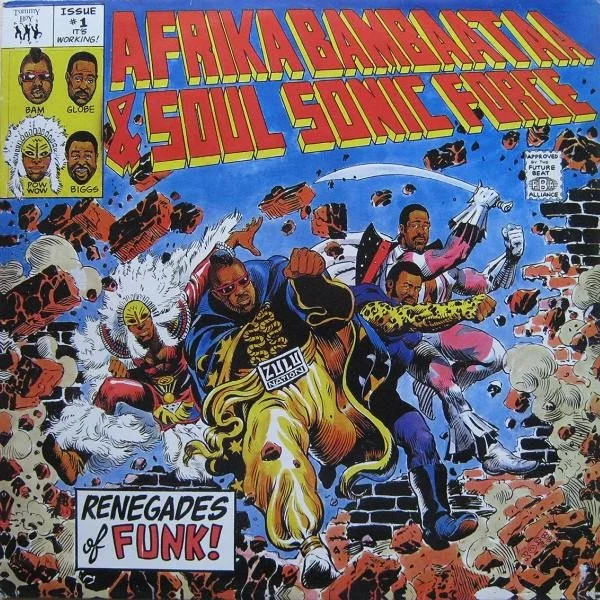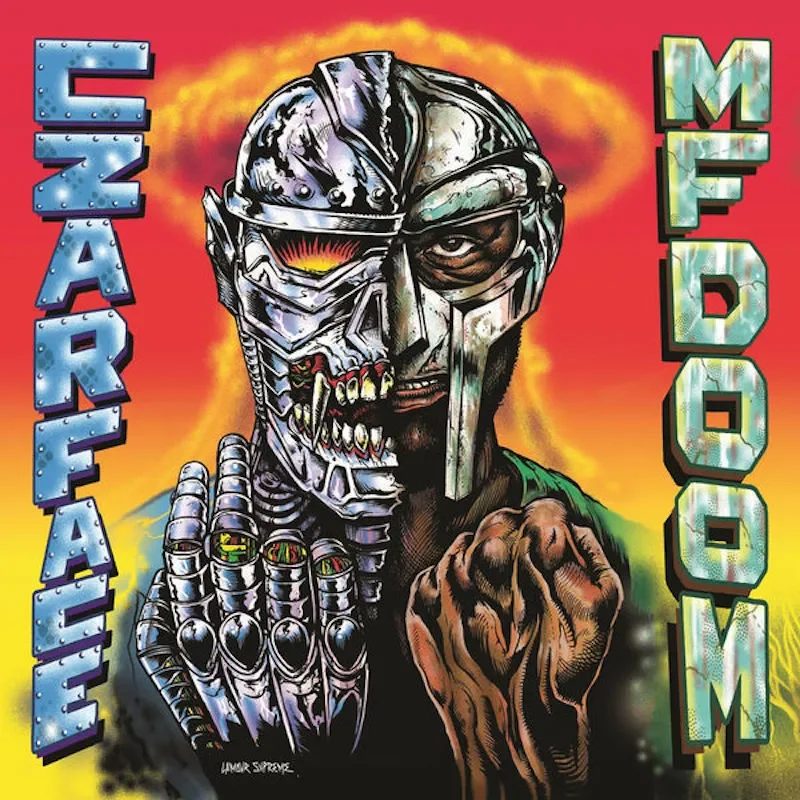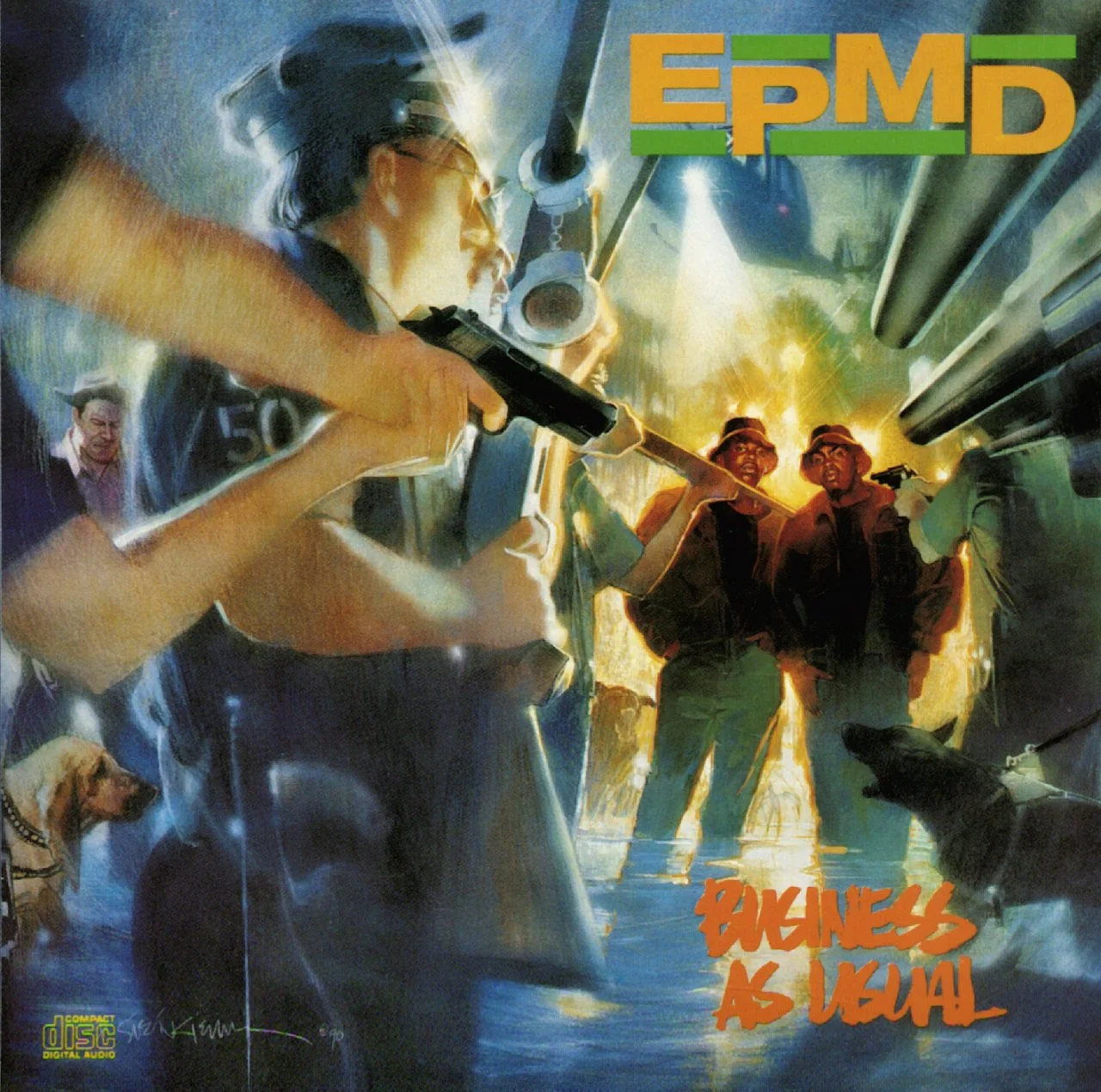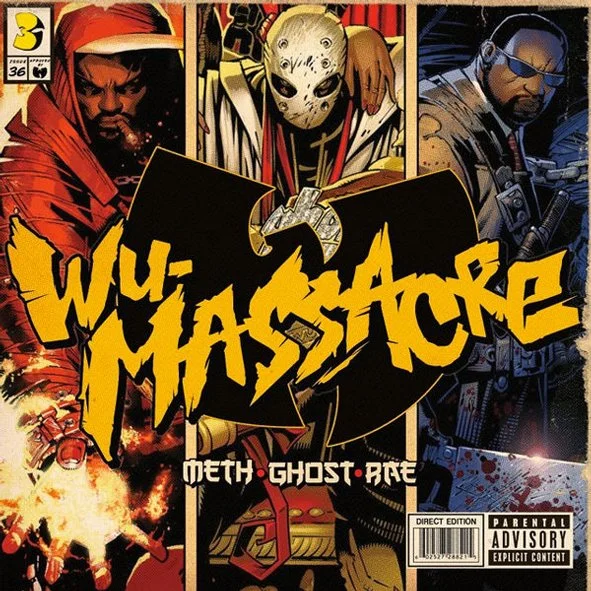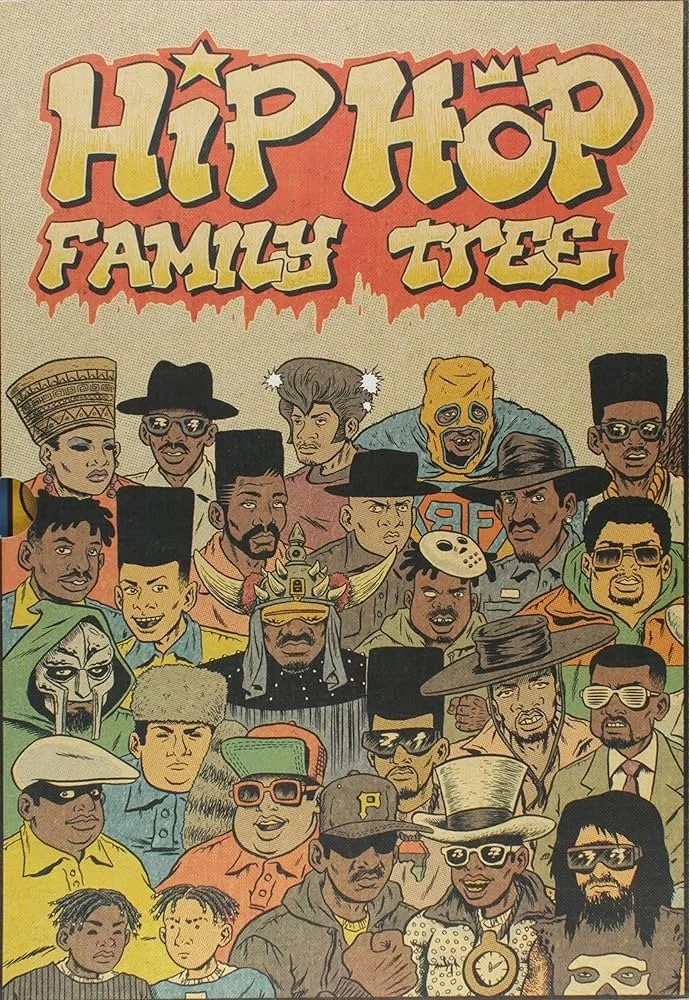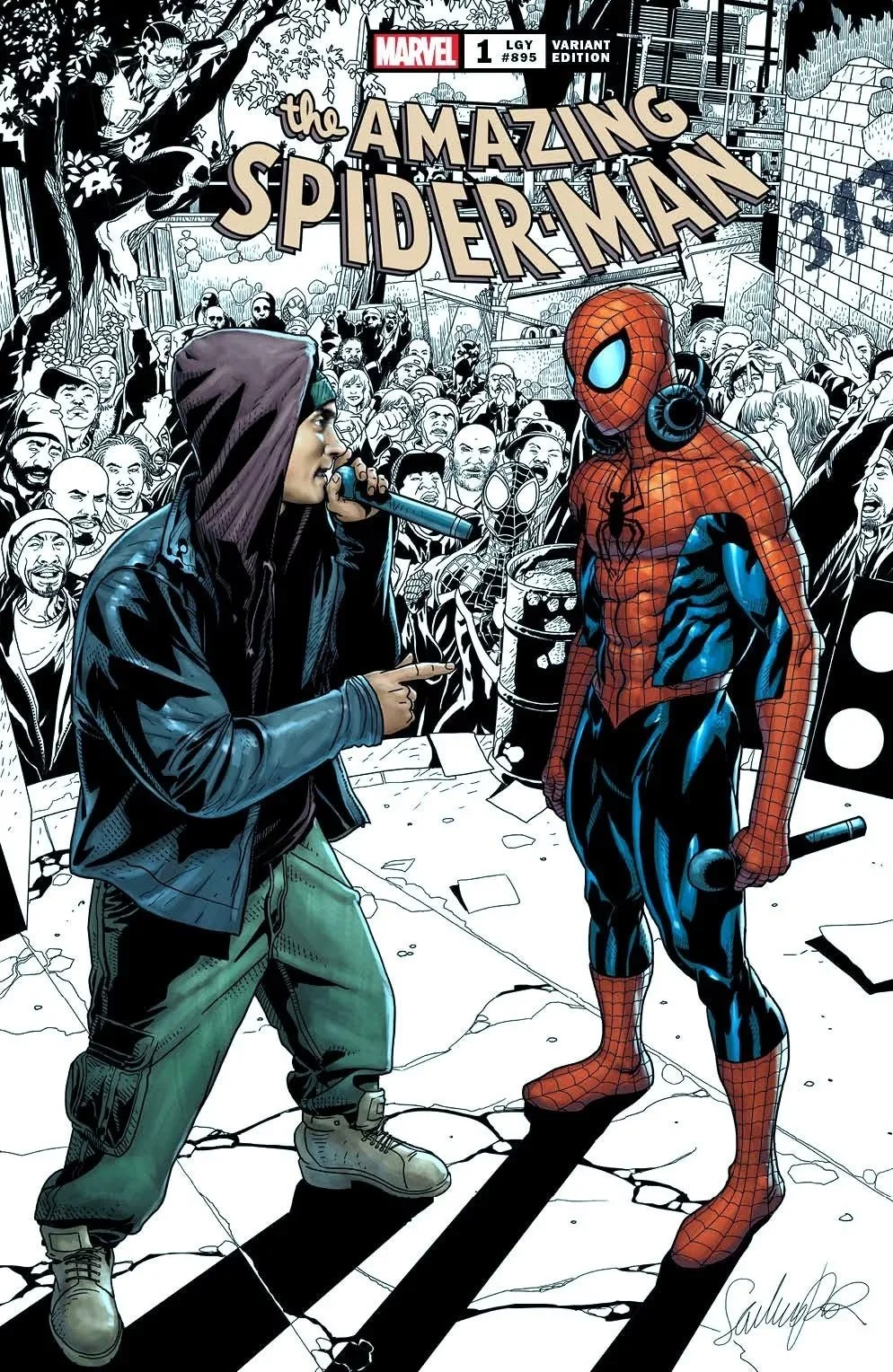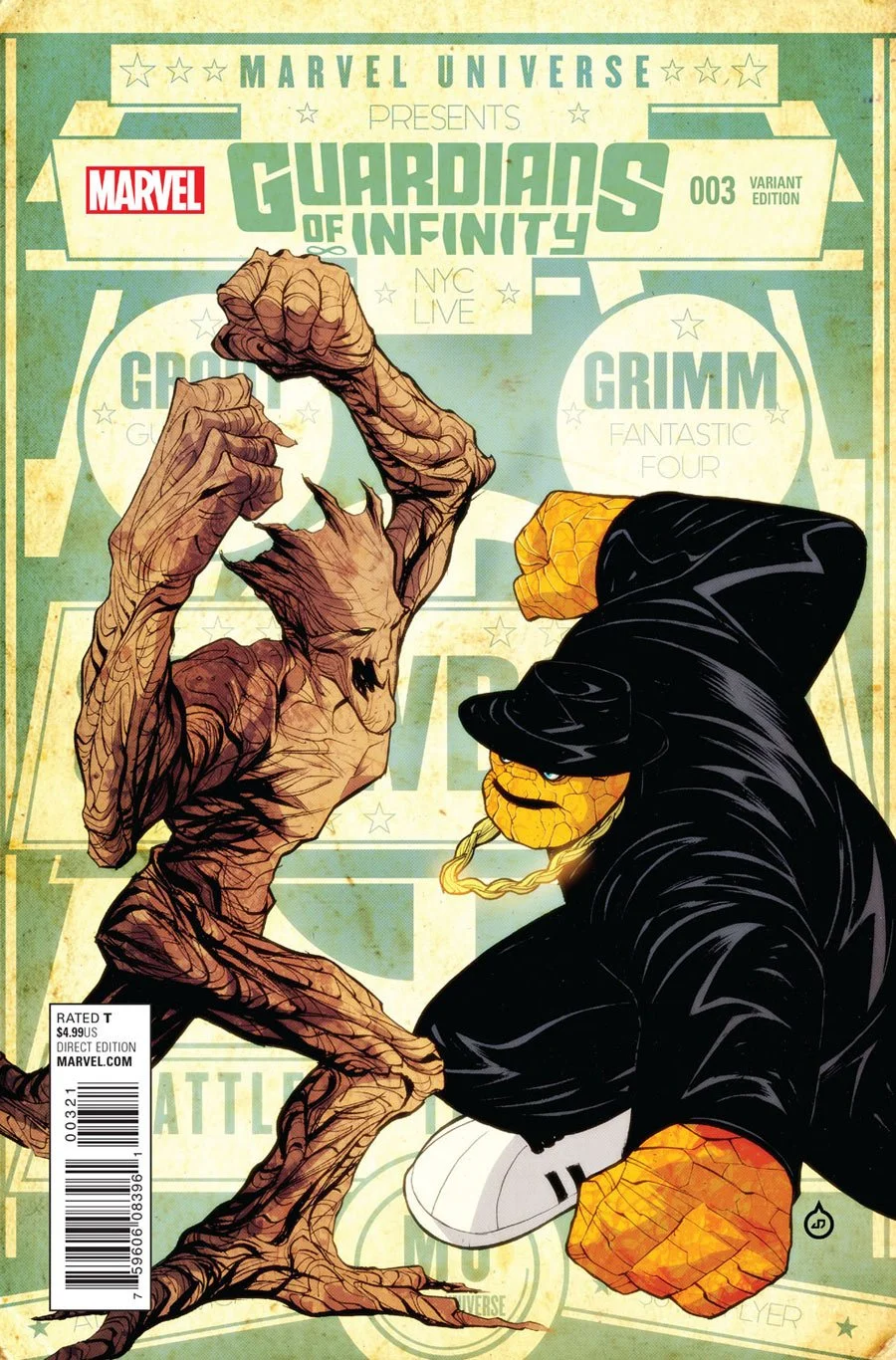Masked in Music: How Hip-Hop and Comic Book Culture Collide
“Flash Gordon when recording, spark the light in the dark, Peter Parker, Spider-Man, all I do is climb the charts.” – Jay-Z
Hip-hop and comic book culture have been symbiotic cousins for over five decades. During its ‘70s infancy, founding figures such as Grandmaster Flash and Afrika Bambaataa’s Soul Sonic Force drew inspiration from the Silver Age of comics. For inner-city Black and Latino youth, superhero stories offered a creative and uplifting response to poverty, oppression, and the urban decay looming over New York City at the time. The works of Stan Lee, Jack Kirby, and Neal Adams provided escapism and empowerment to a generation of kids in marginalized communities.
Image credit: George Pérez
This amalgam of influences later inspired the next class of rap legends, like Run-DMC, who rapped about “crash[ing] through walls, cut[ting] through floors, bust[ing] through ceilings, and knock[ing] down doors,” emulating the unstoppable presence of Marvel’s Hulk. These alter egos allowed both superheroes and rappers to navigate their worlds with strength, confidence, and defiance, even when their real-life identities faced struggle or oppression.
The groundbreaking 1980s produced some of the most innovative comic storytelling of the era and later inspired rapper aliases such as Tony Starks (Ghostface), David Banner, Jean Grey, and MF DOOM. The theme of dual identity became especially prominent in rap in the mid-’90s, as artists frequently adopted alter egos, including Method Man’s Johnny Blaze, Eminem’s Slim Shady, and Big Punisher.
“Different mask, same task.” – Robert Downey Jr., San Diego Comic-Con, 2024
When KMD's Zev Love X reinvented his career in the late ’90s, he drew inspiration from Marvel’s Victor Von Doom and donned a Roman gladiator mask under his new alias, MF DOOM. He retreated from the mainstream into the underground, which he later made his own kingdom of sorts, becoming a legend for a new generation of rap fans. Years later, he would align with the group Czarface, whose marketing catered directly to comic book rap fans.
Image credit: L'Amour Supreme
Whether digging through crates or creating fantastical worlds, both cultures offer a medium to stretch the imagination and express identity through art. Both began as subcultures and eventually evolved into global phenomena. Both tell stories of transformation, survival, and resistance, creating a mutual respect and identification between the two forms.
For comic book artists and writers, it’s picking up a tool and bringing otherworldly visions to life: introverted characters with serious anger management issues, or radioactive spiders biting a Queens high school student. For rap artists, it’s the ability to craft music through flow, rhymes, and wordplay to skillfully paint larger-than-life stories that resonate with real-life experience.
The synergy between the two forms even extends to music album artwork. Since the early ’90s, legendary comic illustrator Bill Sienkiewicz, whose works range from Daredevil to Batman, has been commissioned to create covers for artists like EPMD (Business Never Personal), RZA (Bobby Digital), Kid Cudi (Man on the Moon), and T.I.
Image credit: Bill Sienkiewicz
The cover art for GZA’s classic album Liquid Swords was penciled by acclaimed DC artist Denys Cowan, co-founder of the all-Black comic company Milestone, which gave the world Static Shock. In 2009, acclaimed X-Men artist Chris Bachalo brought Method Man, Raekwon, and Ghostface Killah to graphic life on the Wu Massacre album.
Image credit: Chris Bachalo
The late cartoonist Ed Piskor wonderfully boxed up the connection between the two worlds with his acclaimed graphic series Hip-Hop Family Tree, which told the story of hip-hop’s early days. The series has become a defining work of comic literature, speaking to both mediums, and won a coveted Eisner Award for Best Reality-Based Work.
Image credit: Ed Piskor
Rappers, like comic book heroes, often build larger-than-life personas, while albums frequently follow narrative arcs similar to comics. In 1999, Ghostface Killah (aka Tony Starks) opened his classic album Supreme Clientele with a clip from the 1970s Iron Man cartoon. He later filmed a cameo for the MCU’s Iron Man film, though it was cut due to runtime constraints. Seven years later, Jay-Z released his seventh album, Kingdom Come, which embraced the epic storytelling ethos of superhero comics, depicting themes of generational conflict and legacy.
In 2009, rap superstar Eminem—an avid collector—collaborated with Marvel on a Punisher one-off. Ten years later, on April 7, 2022, he would do so again with a Spider-Man one-off that is currently valued at $2,000 on the reseller site StockX.
Image credit: Salvador Larroca (Marvel)
In a full-circle moment for both genres, one of rap music’s biggest heroes, DMC, launched Darryl Makes Comics. Two years later, DMC would co-write a story for Marvel’s “Guardians of Infinity” series. The issue paired Groot from The Guardians with Fantastic Four’s The Thing, who donned the cover wearing the Godfather Hat, a leather fit, and shell toes made famous by Run-DMC.
Image credit: Damion Scott
In 2016, Marvel Editor-in-Chief and rap fan Axel Alonso commissioned some of comics’ brightest artists to draw Marvel characters recreating classic rap album covers.
That same year, the two genres evolved toward the screen in various ways. Marvel’s Luke Cage TV series, from showrunner Cheo H. Coker, named each episode after a track from legendary duo Gang Starr. Two years later, Marvel’s Black Panther would finally hit the big screen and break numerous records, including the highest-grossing solo superhero movie at the time, the largest February opening weekend, and the top-grossing film directed by a Black filmmaker. Its success was amplified by a rap-driven soundtrack curated by Kendrick Lamar, which debuted at number one on Billboard’s Top 100 and quickly went platinum.
Five years later, renowned producer Metro Boomin brought his brand of alt-trap sonics to Sony’s Spider-Man: Across the Spider-Verse, selling over a million records. In 2025, the most popular version of the iconic Spider-Man character is not a Caucasian teen from Queens named Peter Parker, but Miles Morales: a half-Black, half-Puerto Rican teenager from Brooklyn, wearing Air Jordans and a hoodie. His emergence exemplifies how comic books and hip-hop alike continue to redefine representation and storytelling for a new generation.
The collaboration between the two worlds shows no signs of slowing. On October 2025, hip-hop label Mass Appeal will partner with Marvel Comics for a limited-edition release based on their Legends Has It… campaign. This one-off will highlight a run of releases from some of rap music’s most legendary figures, including Nas, DJ Premier, Raekwon, Slick Rick, Mobb Deep, and De La Soul, proving that the synergy between vinyl and panels, masks and microphones, continues to thrive.
From Grandmaster Flash to Kendrick Lamar, from Spider-Man to Black Panther, hip-hop and comics have always reflected the struggles, dreams, and identities of marginalized communities, inspiring generations with their creativity, resilience, and vision. Their shared legacy proves that the mask—whether literal or metaphorical—can empower, transform, and endure.

